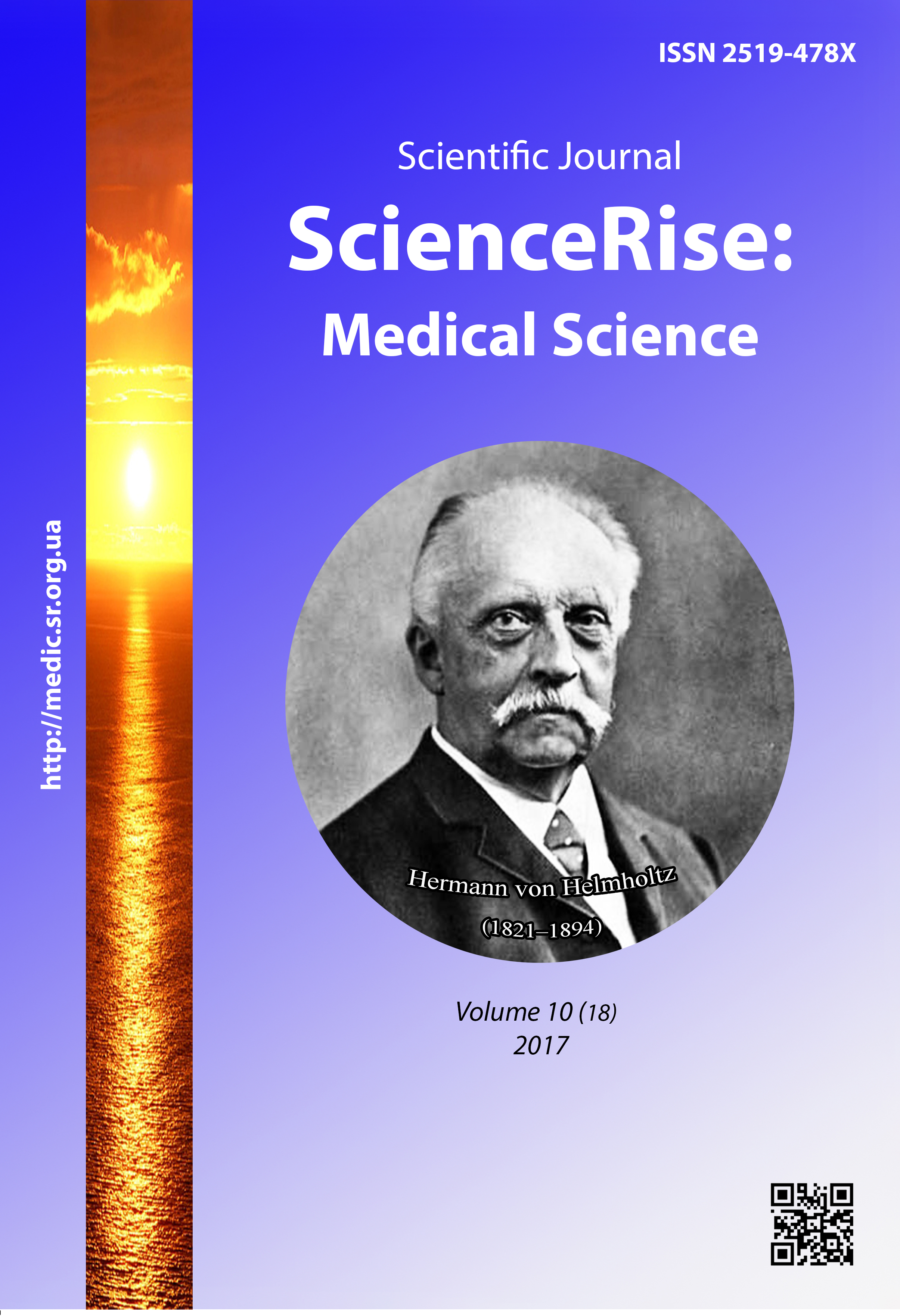Анализ осложнений, возникших в периоперационном периоде, при использовании различных режимов инфузионной терапии
DOI:
https://doi.org/10.15587/2519-4798.2017.113527Ключові слова:
рестриктивная жидкостная ресусцитация, целенаправленная жидкостная терапия, гемодинамика, вазопрессоры, гиповолемия, органная перфузияАнотація
В статье проведен сравнительный анализ частоты неблагоприятных событий, которые могли быть обусловлены использованием режимов интраоперационной инфузионной терапии, у 176 пациентов, перенесших хирургические вмешательства в онкоортопедии. Было выявлено, что при применении целенаправленной инфузионной терапии уменьшается риск возникновения осложнений со стороны ЖКТ и почек и обеспечивается более стабильная послеоперационная гемодинамика по сравнению с рестриктивным режимом
Посилання
- Butler, F. K., Holcomb, J. B., Schreiber, M. A. et. al. (2015). Liquid resuscitation in case of hemorrhagic shock in the Manual for first aid in combat conditions by unqualified personnel. Medicine of non-adherence to the countries, 3, 56–83.
- Dutton, R. P. (2014). Management of traumatic haemorrhage – the US perspective. Anaesthesia, 70, 108–e38. doi: 10.1111/anae.12894
- Gutierrez, M. C., Moore, P. G., Liu, H. (2013). Goal-Directed Therapy in Intraoperative Fluidand Hemodynamic Management. Journal of Biomedical Research, 27 (5), 357–365. doi: 10.7555/JBR.27.20120128
- Cata, J. P., Gottumukkala, V. (2012). Blood Loss and Massive Transfusion in Patients Undergoing Major Oncological Surgery: What Do We Know? ISRN Anesthesiology, 2012, 1–11. doi: 10.5402/2012/918938
- Veelo, D. P., van Berge Henegouwen, M. I., Ouwehand, K. S., Geerts, B. F., Anderegg, M. C. J., van Dieren, S. et. al. (2017). Effect of goal-directed therapy on outcome after esophageal surgery: A quality improvement study. PLOS ONE, 12 (3), e0172806. doi: 10.1371/journal.pone.0172806
- Voldby, A. W., Brandstrup, B. (2016). Fluid therapy in the perioperative setting–a clinical review. Journal of Intensive Care, 4 (1), 27. doi: 10.1186/s40560-016-0154-3
- Pang, Q., Liu, H., Chen, B., Jiang, Y. (2017). Restrictive and liberal fluid administration in major abdominal surgery. Saudi Medical Journal, 38 (2), 123–131. doi: 10.15537/smj.2017.2.15077
- Kaur, M., Anjum, A., Soni, K., Kumar, A., Albert, V., Sawhney, C., Subramanian, A. (2013). Assessment of hemostatic changes after crystalloid and colloid fluid preloading in trauma patients using standard coagulation parameters and thromboelastography. Saudi Journal of Anaesthesia, 7 (1), 48–56. doi: 10.4103/1658-354x.109809
- Doherty, M., Buggy, D. J. (2012). Intraoperative fluids: how much is too much? British Journal of Anaesthesia, 109 (1), 69–79. doi: 10.1093/bja/aes171
- Kozek-Langenecker, S. A., Afshari, A., Albaladejo, P., Santullano, C. A. A., De Robertis, E., Filipescu, D. C. et. al. (2013). Management of Severe Perioperative Bleeding: Guidelines from the European Society of Anaesthesiology. European Journal of Anaesthesiology, 30 (6), 270–382. doi: 10.1097/eja.0b013e32835f4d5b
- Rossaint, R., Bouillon, B., Cerny, V., Coats, T. J., Duranteau, J., Fernandez-Mondejar, E. et. al. (2016). The European guideline on management of major bleeding and coagulopathy following trauma: fourth edition. Critical Care, 20 (1), 100. doi: 10.1186/s13054-016-1265-x
##submission.downloads##
Опубліковано
Як цитувати
Номер
Розділ
Ліцензія
Авторське право (c) 2017 Mykola Lyzohub, Sergii Kursov, Kseniia Lyzohub

Ця робота ліцензується відповідно до Creative Commons Attribution 4.0 International License.
Наше видання використовує положення про авторські права Creative Commons CC BY для журналів відкритого доступу.
Автори, які публікуються у цьому журналі, погоджуються з наступними умовами:
1. Автори залишають за собою право на авторство своєї роботи та передають журналу право першої публікації цієї роботи на умовах ліцензії Creative Commons CC BY, котра дозволяє іншим особам вільно розповсюджувати опубліковану роботу з обов'язковим посиланням на авторів оригінальної роботи та першу публікацію роботи у цьому журналі.
2. Автори мають право укладати самостійні додаткові угоди щодо неексклюзивного розповсюдження роботи у тому вигляді, в якому вона була опублікована цим журналом (наприклад, розміщувати роботу в електронному сховищі установи або публікувати у складі монографії), за умови збереження посилання на першу публікацію роботи у цьому журналі.










